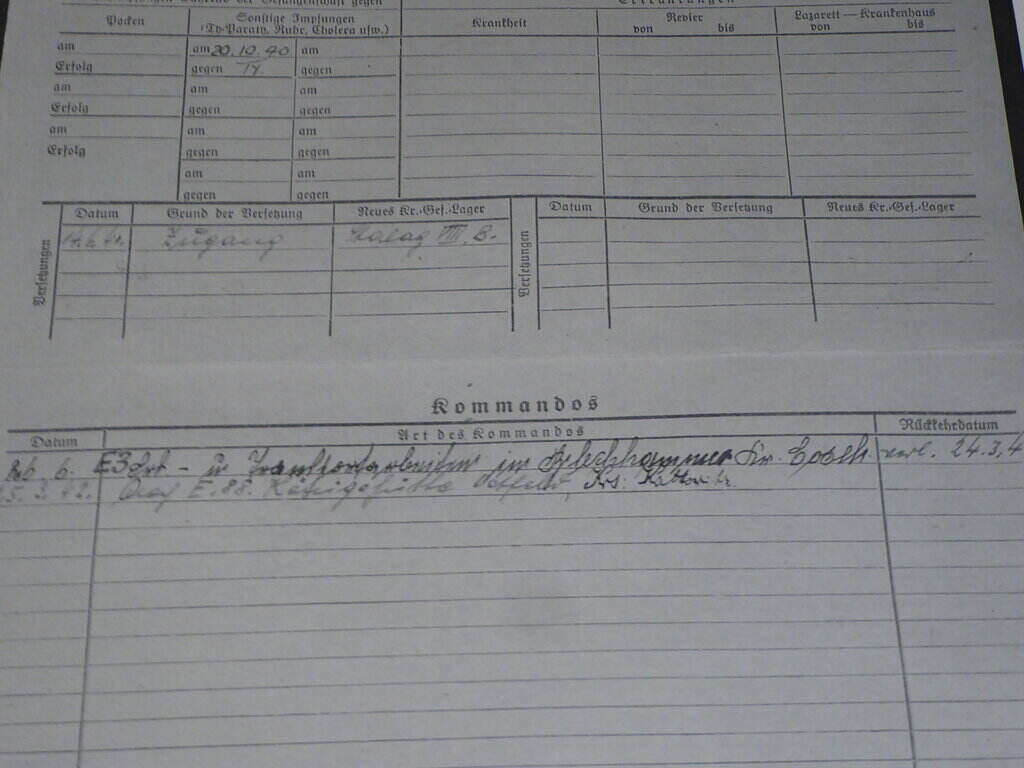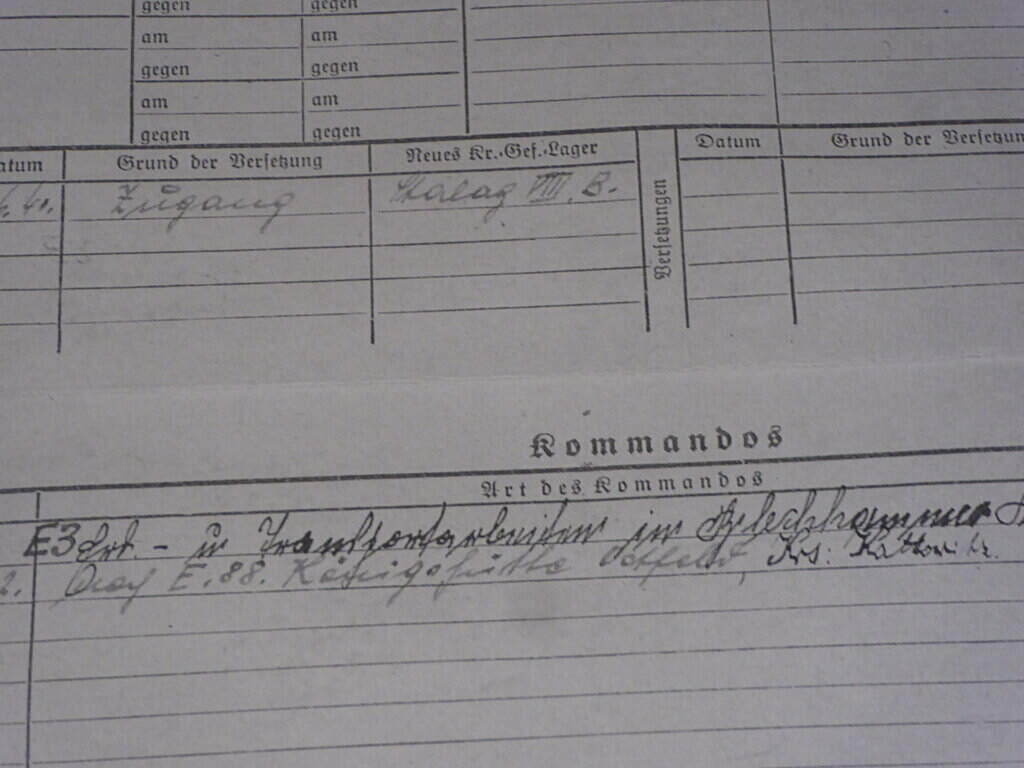Chemikiem
23 Dec 2020 #1
Throughout WW2, a member of my family spent the duration of the war in a POW camp, Stalag VIIIB, in Łambinowice, then known as Lamsdorf.
Prisoners were typically sent out from this camp to undergo forced labour in working parties in the surrounding areas and further afield. My family member, for example, was forced to work 12 hours a day underground in a coal mine.
Often, these working parties corresponded to areas and towns within Poland. This is what I am interested in.
Last week I received copies of some German prisoner of war records for my family member. The rest are in the Russian State Archives.There is not a great deal of information in them, but some of it is in German. I was hoping somebody here may be able to translate, although the handwriting isn't very legible.
Under 'Kommandos', two camps are referenced, E3 and E88. E3 corresponds to one of the working parties at Blechhammmer, ( Blachownia Sląską) where POW's were involved in building the Upper Silesian Hydrogenation works, producing synthetic gasoline from coal for the German armed forces.
More information here:
en.wikipedia.org/wiki/Blechhammer
pl.wikipedia.org/wiki/Blachownia_%C5%9Al%C4%85ska
lamsdorf.com/uploads/6/4/2/7/6427590/blechhammer.pdf
E88 corresponds to working parties Hohrnlohehutte/Konigshutte. I have no idea what type of work POW's had to undertake at either of these camps, and there is no other information on the Lamsdorf website about them. I do know that Konigshutte is the German for Chorzów. It's a long shot expecting anyone to be able to translate or know anything about these working parties, but if anyone can help I would very much appreciate it.
Hope I can post the photos now!
Prisoners were typically sent out from this camp to undergo forced labour in working parties in the surrounding areas and further afield. My family member, for example, was forced to work 12 hours a day underground in a coal mine.
Often, these working parties corresponded to areas and towns within Poland. This is what I am interested in.
Last week I received copies of some German prisoner of war records for my family member. The rest are in the Russian State Archives.There is not a great deal of information in them, but some of it is in German. I was hoping somebody here may be able to translate, although the handwriting isn't very legible.
Under 'Kommandos', two camps are referenced, E3 and E88. E3 corresponds to one of the working parties at Blechhammmer, ( Blachownia Sląską) where POW's were involved in building the Upper Silesian Hydrogenation works, producing synthetic gasoline from coal for the German armed forces.
More information here:
en.wikipedia.org/wiki/Blechhammer
pl.wikipedia.org/wiki/Blachownia_%C5%9Al%C4%85ska
lamsdorf.com/uploads/6/4/2/7/6427590/blechhammer.pdf
E88 corresponds to working parties Hohrnlohehutte/Konigshutte. I have no idea what type of work POW's had to undertake at either of these camps, and there is no other information on the Lamsdorf website about them. I do know that Konigshutte is the German for Chorzów. It's a long shot expecting anyone to be able to translate or know anything about these working parties, but if anyone can help I would very much appreciate it.
Hope I can post the photos now!

rsz_1p1020930.jpg
rsz_1p1020932.jpg
